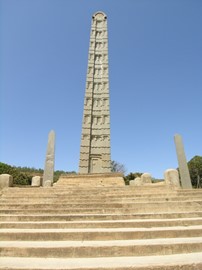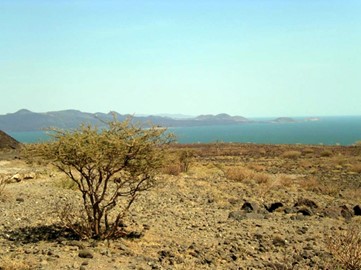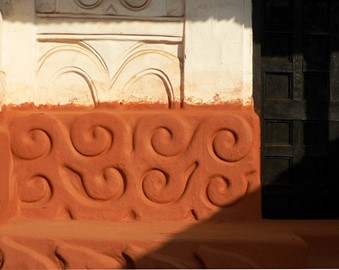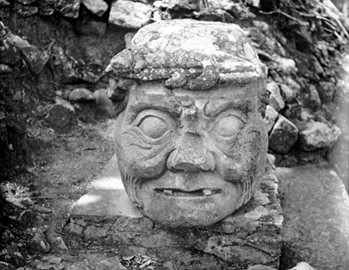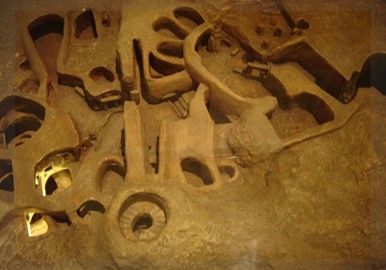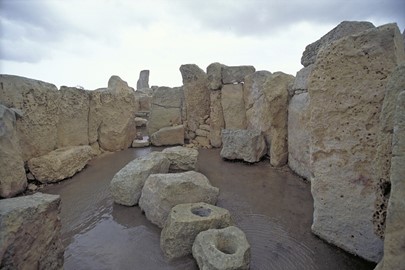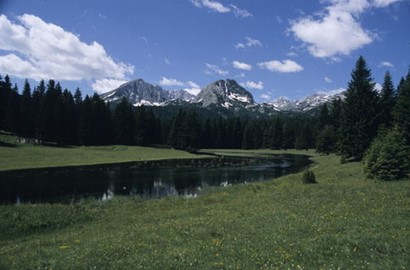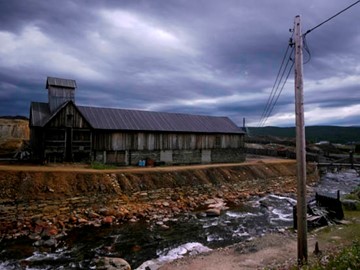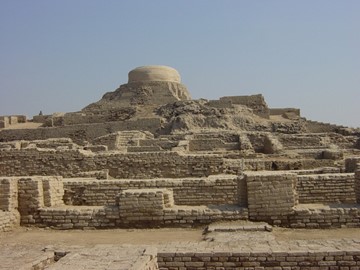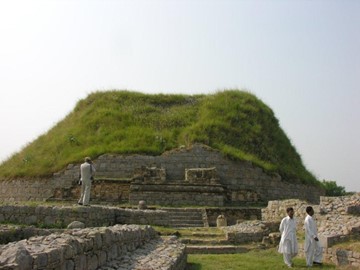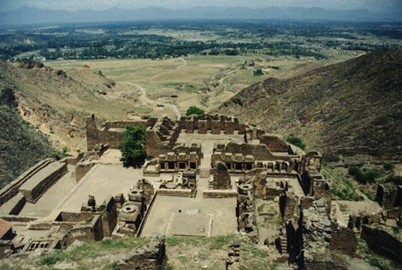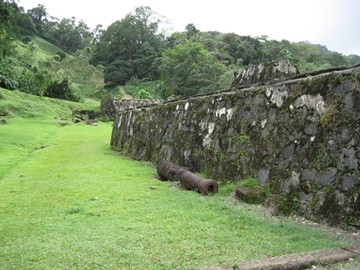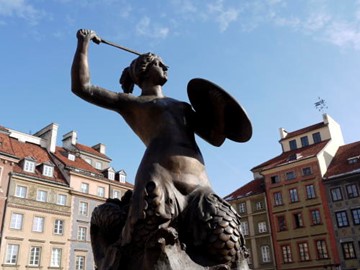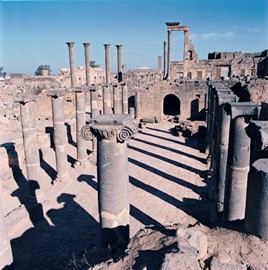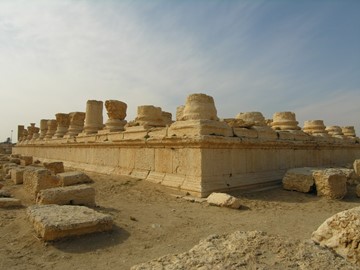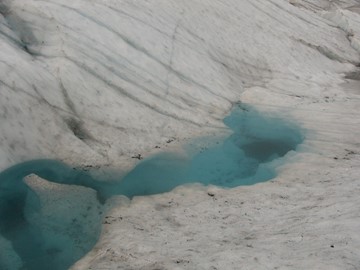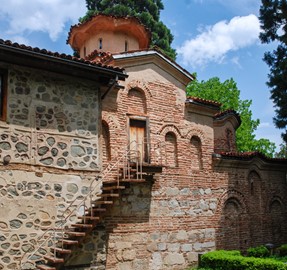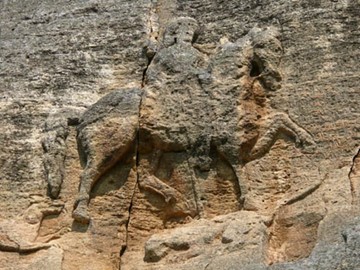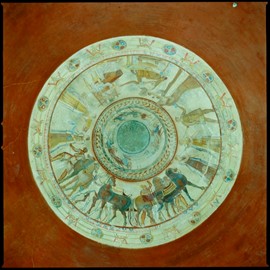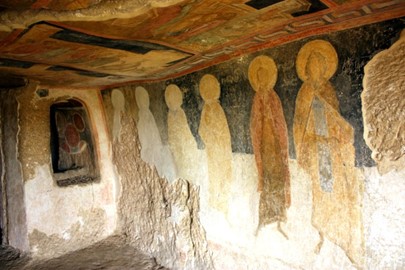search
Aksum
Aksum, a UNESCO World Heritage site in Ethiopia, is an ancient city renowned for its historical and cultural significance. It was once the capital of the Aksumite Empire, a major trading power between the 1st and 7th centuries AD, connecting Africa with the Roman Empire and India. The site features impressive monolithic obelisks, royal tombs, and the ruins of palaces and churches, including the Church of St. Mary of Zion, believed by some to house the Ark of the Covenant. Aksum remains a testament to Ethiop... Read More
Lower Valley of the Omo
The Lower Valley of the Omo, a UNESCO World Heritage Site in Ethiopia, is a renowned prehistoric location celebrated for its significant contributions to understanding human evolution. It has yielded numerous hominid fossils, including early Homo sapiens remains dating back 195,000 years, alongside Australopithecus fragments and ancient stone tools from about 2.4 million years ago. These discoveries, preserved in ancient sedimentary deposits near Lake Turkana, highlight the site’s critical role in paleoanth... Read More
Asante Traditional Buildings
The Asante Traditional Buildings, a UNESCO World Heritage site in Ghana, showcase the architectural prowess and cultural heritage of the Asante people. Constructed primarily from mud, timber, and thatch, these structures feature intricate designs and vibrant colors, reflecting the society’s spiritual beliefs and social hierarchy. Built in the 18th and 19th centuries, they served as residences for chiefs and priests, embodying the power and wealth of the Asante Kingdom. Today, these well-preserved buildings ... Read More
Copán
Copán, a UNESCO World Heritage site in Honduras, is an ancient Mayan city renowned for its intricate stone carvings, hieroglyphic stairway, and well-preserved ruins. Flourishing between the 5th and 9th centuries, it served as a major political and cultural center, showcasing advanced architecture and artistry. Today, it offers a glimpse into the sophisticated Mayan civilization, attracting visitors with its historical significance and archaeological treasures.
Santa Maria delle Grazie
Santa Maria delle Grazie, a UNESCO World Heritage site in Italy, is a historic Dominican convent renowned for housing Leonardo da Vinci’s masterpiece, 'The Last Supper.' This 15th-century mural, painted in the convent’s refectory, exemplifies Renaissance art and innovation. The site itself, a blend of Gothic and Renaissance architecture, reflects the cultural and artistic heritage of its time. Its global significance lies in this extraordinary fusion of art and history.
Hal Saflieni Hypogeum
The Hal Saflieni Hypogeum, a UNESCO World Heritage site in Malta, is a remarkable prehistoric underground sanctuary dating back to around 3600–2500 BC. Discovered in 1902, this multi-level complex was carved from solid limestone and served as both a burial site and a place of worship, housing the remains of over 7,000 individuals alongside intricate chambers like the 'Holy of Holies.' Its well-preserved acoustics and red-ochre wall paintings offer a rare glimpse into Neolithic culture and religious practice... Read More
Valletta
Valletta, a UNESCO World Heritage site in Malta, is a historic fortified city renowned for its Baroque architecture, grand palaces, and stunning harbors. Founded in the 16th century by the Knights of St. John, it boasts iconic landmarks like St. John’s Co-Cathedral and the Grand Master’s Palace, reflecting its rich cultural and military past. Today, this vibrant capital blends history with modernity, offering visitors a captivating glimpse into its storied legacy.
Megalithic Temples of Malta
The Megalithic Temples of Malta, recognized as a World Heritage site, are among the oldest free-standing structures in the world, dating back to 3600–2500 BCE. Built by a prehistoric culture, these temples showcase advanced architectural techniques with large limestone blocks and intricate designs. They served as ceremonial and religious centers, offering insight into early human civilization and its spiritual practices. Today, they stand as a testament to Malta's rich archaeological legacy.
Durmitor
Durmitor National Park, a UNESCO World Heritage site in Montenegro, is renowned for its stunning natural beauty, featuring dramatic limestone peaks, deep canyons, and glacial lakes. The park is home to Tara River Canyon, one of the deepest gorges in Europe, and boasts diverse flora and fauna, including rare species like the Balkan chamois. Its rugged terrain offers opportunities for hiking, skiing, and rafting, making it a haven for outdoor enthusiasts. This protected landscape preserves both ecological ric... Read More
Røros
Røros Mining Town and the Circumference, a UNESCO World Heritage site in Norway, is a well-preserved historic mining town founded in 1646. Known for its copper mining heritage, the town features charming wooden architecture, including colorful 17th- and 18th-century buildings, and a prominent church that dominates the skyline. Its unique cultural and industrial history, shaped by centuries of mining activity, earned it a place on the World Heritage list in 1980. Today, Røros stands as a living museum, offer... Read More
Moenjodaro
The Archaeological Ruins at Moenjodaro, a UNESCO World Heritage site in Pakistan, represent one of the best-preserved urban settlements of the ancient Indus Valley Civilization, dating back to around 2500 BCE. This remarkable site showcases advanced engineering with its sophisticated drainage systems, brick-built structures, and a well-planned grid layout, reflecting the ingenuity of its Bronze Age inhabitants. Key features include the Great Bath, a large public water tank, and the so-called Granary, offeri... Read More
Taxila
Taxila, a UNESCO World Heritage site in Pakistan, is an ancient city renowned for its historical and cultural significance. Dating back to the 6th century BCE, it served as a major center of learning and trade, influenced by Persian, Greek, and Buddhist civilizations. The site features a wealth of archaeological remains, including stupas, monasteries, and urban settlements, reflecting its role as a crossroads of ancient cultures. Today, Taxila stands as a testament to the region’s rich past, offering valuab... Read More
Takht i Bahi and Sahr i Bahlol
Takht-i-Bahi and Sahr-i-Bahlol, a UNESCO World Heritage site in Pakistan, represent a well-preserved Buddhist monastic complex from the 1st to 7th centuries CE. Takht-i-Bahi features a hilltop monastery with intricately designed stupas, meditation cells, and assembly halls, showcasing ancient Buddhist architecture and urban planning. Nearby, Sahr-i-Bahlol contains archaeological remains of a thriving settlement linked to the monastery, offering insights into the region’s historical and religious significanc... Read More
Portobelo and San Lorenzo
Portobelo and San Lorenzo, a UNESCO World Heritage site in Panama, are historic colonial fortifications built by the Spanish in the 16th and 17th centuries along the Caribbean coast. These well-preserved sites, including the forts of San Lorenzo and various structures in Portobelo, were strategically designed to protect transatlantic trade routes and defend against pirate attacks. The area showcases a blend of military architecture and natural beauty, with stone walls, cannons, and scenic coastal views. Rec... Read More
Warsaw
The Historic Centre of Warsaw, a UNESCO World Heritage site in Poland, is a remarkable example of a meticulously reconstructed urban area, reflecting its resilience after near-total destruction during World War II. This vibrant district showcases a blend of architectural styles, including Gothic, Renaissance, and Baroque, with key landmarks like the Royal Castle and St. John’s Cathedral highlighting its rich history. Recognized for its cultural and historical significance, it stands as a testament to human ... Read More
Bosra
The Ancient City of Bosra, a UNESCO World Heritage site in Syria, is renowned for its well-preserved Roman, Byzantine, and Islamic architecture. This historic city features a remarkable 2nd-century Roman theater, one of the best-preserved in the world, alongside ancient mosques, churches, and a sprawling network of ruins. Bosra’s significance lies in its role as a key trading hub along ancient caravan routes, reflecting a rich blend of cultural influences over centuries. Today, it stands as a testament to S... Read More
Palmyra
Palmyra, a UNESCO World Heritage site in Syria, is an ancient city renowned for its well-preserved Roman-era ruins. Dating back to the 1st and 2nd centuries, it served as a vital trading hub along the Silk Road, blending Greco-Roman architecture with local influences. Notable landmarks include the grand colonnaded street, the Temple of Bel, and the iconic Tetrapylon, showcasing its historical and cultural significance. Despite suffering damage during recent conflicts, Palmyra remains a testament to the regi... Read More
Ichkeul
Ichkeul National Park, a UNESCO World Heritage site in Tunisia, is a vital wetland ecosystem renowned for its rich biodiversity. It serves as a critical wintering ground for hundreds of thousands of migratory birds, including rare species like the white-headed duck and ferruginous duck. The park’s unique combination of lake, marshes, and surrounding hills supports a diverse range of flora and fauna, making it an ecological treasure. Its significance as a natural haven has earned it international recognition... Read More
Redwood
Redwood National and State Parks, a UNESCO World Heritage site in the United States, is renowned for its towering ancient redwood trees, some of the tallest and oldest living organisms on Earth. This protected coastal region features diverse ecosystems, including rugged shorelines, rivers, and dense forests that support a rich variety of wildlife, such as black bears, elk, and rare species like the northern spotted owl. Established to preserve these natural wonders, the parks offer a glimpse into an prehist... Read More
Bialowieza Forest
Bialowieza Forest, a UNESCO World Heritage site in Belarus and Poland, recognized in 1979 with expansions in 1992 and 2014, is one of Europe’s last primeval lowland forests, preserved for over 800 years. Home to the largest population of European bison and ancient oaks, its dense woodlands and wetlands showcase exceptional biodiversity and natural resilience. This cross-border site reflects a rare remnant of Europe’s wild past, blending ecological significance with centuries of human stewardship in a pristi... Read More
Glacier Bay, Kluane and Tatshenshini
Glacier Bay / Kluane / Tatshenshini, a UNESCO World Heritage site in Canada and the United States, recognized in 1979 with expansions in 1992 and 1994, is a vast wilderness of glaciers, mountains, and rivers across Alaska and Yukon. Featuring North America’s tallest peaks, like Mount Logan, and dynamic icefields, it harbors grizzly bears, Dall sheep, and rare glacial ecosystems. This transnational site reflects a stunning natural legacy, showcasing geological grandeur and biodiversity in a remote northern f... Read More
Boyana Church
Boyana Church, a UNESCO World Heritage site in Bulgaria, is a medieval treasure renowned for its exceptional 13th-century frescoes. This small, unassuming church houses remarkably preserved murals that showcase a pivotal shift toward realism in European art, blending Byzantine influences with local creativity. Recognized for its historical and artistic significance, it offers a rare glimpse into the cultural and religious life of the Middle Ages in the region.
Madara Rider
The Madara Rider, a UNESCO World Heritage site in Bulgaria, is a striking 8th-century rock relief carved into a towering cliff. Depicting a triumphant horseman spearing a lion, accompanied by inscriptions, this monumental artwork symbolizes early Bulgarian statehood and artistic prowess under the First Bulgarian Empire. Celebrated for its historical and cultural value, it stands as a unique testament to medieval artistry and power in the region.
Thracian Tomb of Kazanlak
The Thracian Tomb of Kazanlak, a UNESCO World Heritage site in Bulgaria, is a remarkable 4th-century BCE burial chamber celebrated for its vivid frescoes. Hidden within a beehive-shaped dome, the tomb’s murals depict funeral rituals and mythological scenes with exceptional artistry, offering a rare window into Thracian culture and beliefs. Recognized for its historical and artistic significance, it stands as a masterpiece of ancient Hellenistic influence in the region.
Rock Hewn Churches of Ivanovo
The Rock-Hewn Churches of Ivanovo, a UNESCO World Heritage site in Bulgaria, are a collection of medieval chapels, churches, and monasteries carved into cliffs along a river valley. Dating from the 13th and 14th centuries, these sanctuaries feature well-preserved frescoes that blend Byzantine art with local traditions, reflecting the spiritual devotion of monastic communities. Celebrated for their historical and artistic value, they offer a unique glimpse into Bulgaria’s medieval religious heritage.
